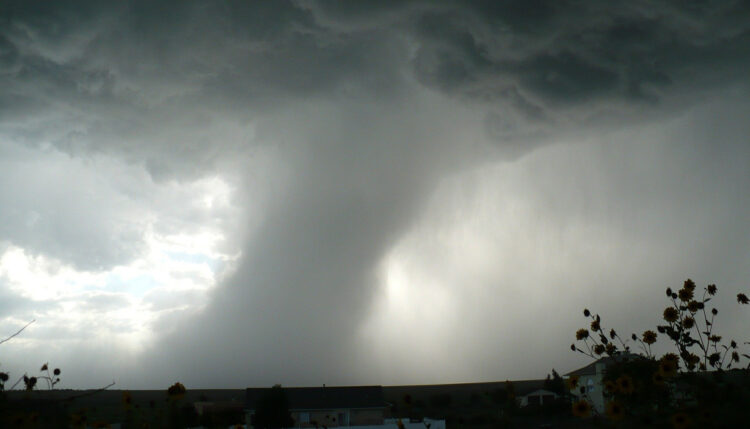 March 7. From the 80s on Sunday and today, to sub-freezing temps forecast for this coming weekend, anything can happen this time of year, including tornadoes. Gov. Roy Cooper has declared March 6-12 as Severe Weather Preparedness Week.
March 7. From the 80s on Sunday and today, to sub-freezing temps forecast for this coming weekend, anything can happen this time of year, including tornadoes. Gov. Roy Cooper has declared March 6-12 as Severe Weather Preparedness Week.
Spring is typically the most active season for thunderstorms and tornadoes. There will be a statewide tornado drill on Wednesday, March 9 at 9:30 am. At home or at work, that means seeking shelter on the lowest floor of your home or building, in an interior room away from doors or windows.
Tornadoes form during severe thunderstorms when winds change direction and increase in speed. These storms can produce large hail and damaging winds that can reach 300 miles per hour. A tornado can develop rapidly with little warning, so having a plan in place will allow you to respond quickly.
Test messages will be broadcast via the Emergency Alert System on radio and TV and on NOAA weather radios at 9:30 am Wednesday, signaling the start of the tornado drill.
Across the state in 2021, North Carolina recorded 21 tornado touchdowns, 101 large hail storms, 344 damaging thunderstorm wind events, 109 flood or flash flood events, which includes the remnants from Tropical Storm Fred that caused deadly flooding in Western North Carolina.
Weather safety tips:
—Develop a family emergency plan so each member knows what to do, where to go and who to call during an emergency.
—If thunder roars, go indoors! Lightning is close enough to strike you.
—Know where the nearest safe room is, such as a basement or interior room away from windows.
—Know the terms: WATCH means severe weather is possible. WARNING means severe weather is occurring; take shelter immediately.
—Assemble an emergency supply kit for use at home or in your vehicle. Make sure to include a 3-day supply of non-perishable food and bottled water.
—If driving, leave your vehicle immediately to seek shelter in a safe structure. Do not try to outrun a tornado in your vehicle and do not stop under an overpass or bridge.
—If there is no shelter available, take cover in a low-lying flat area.




